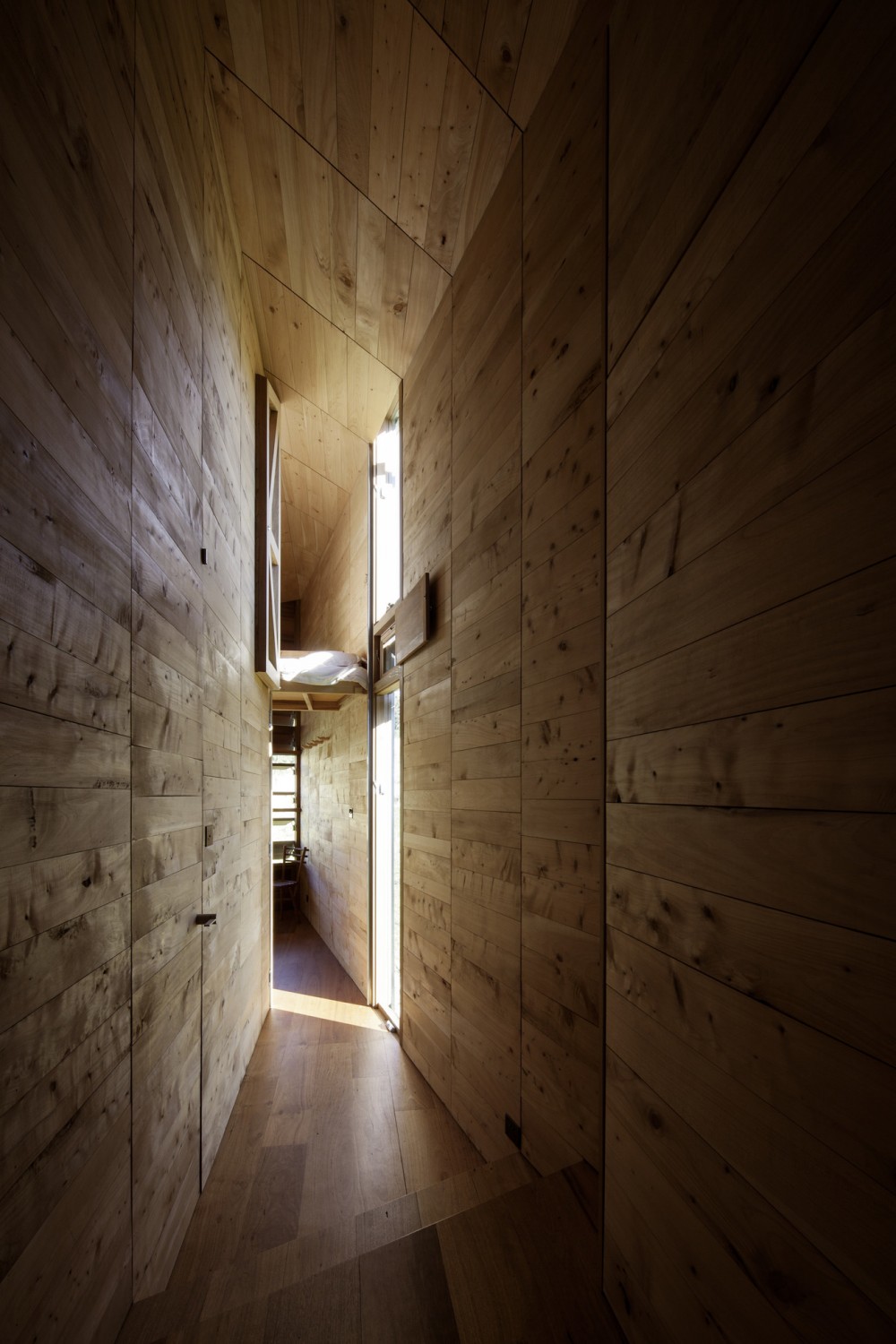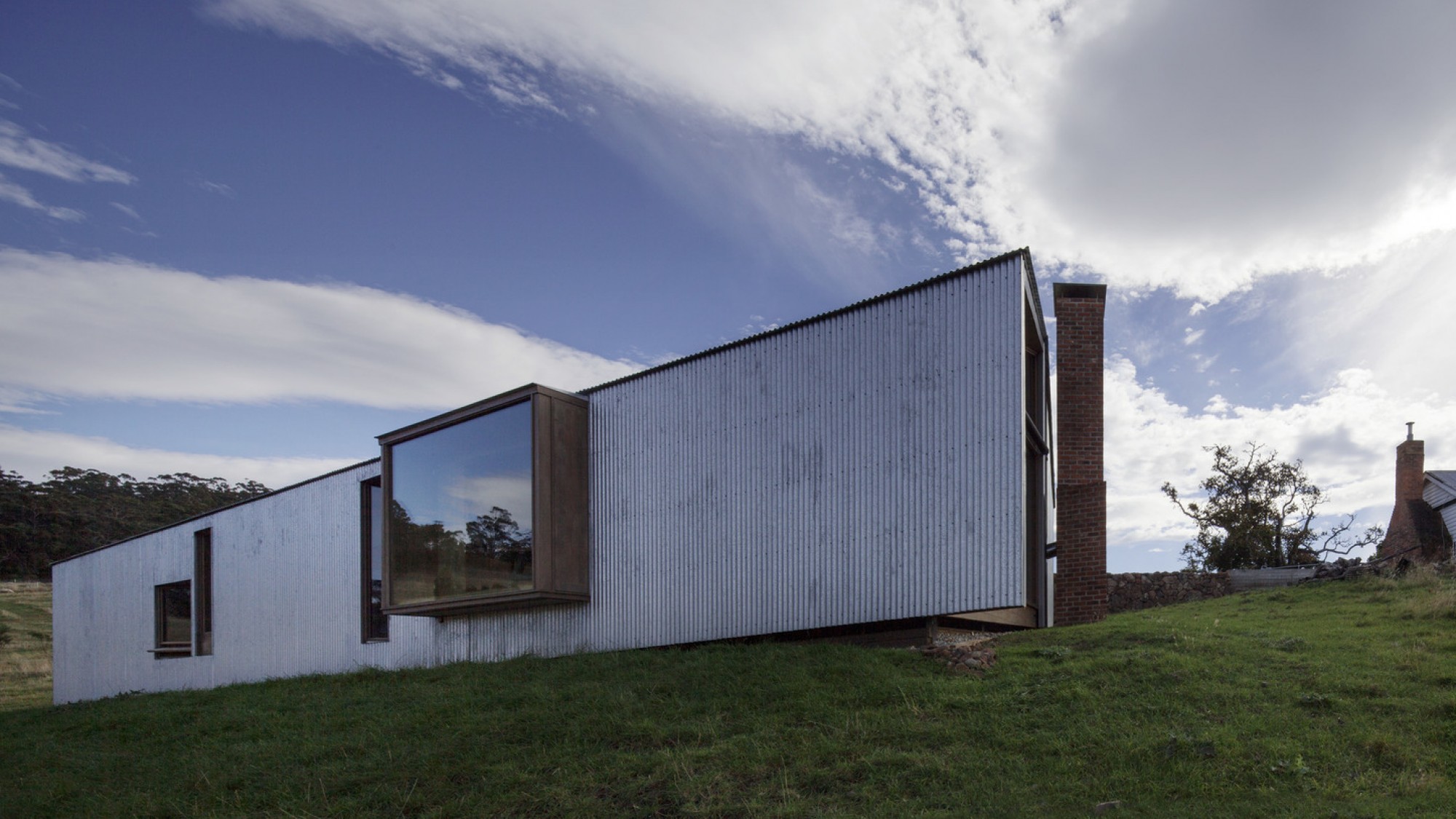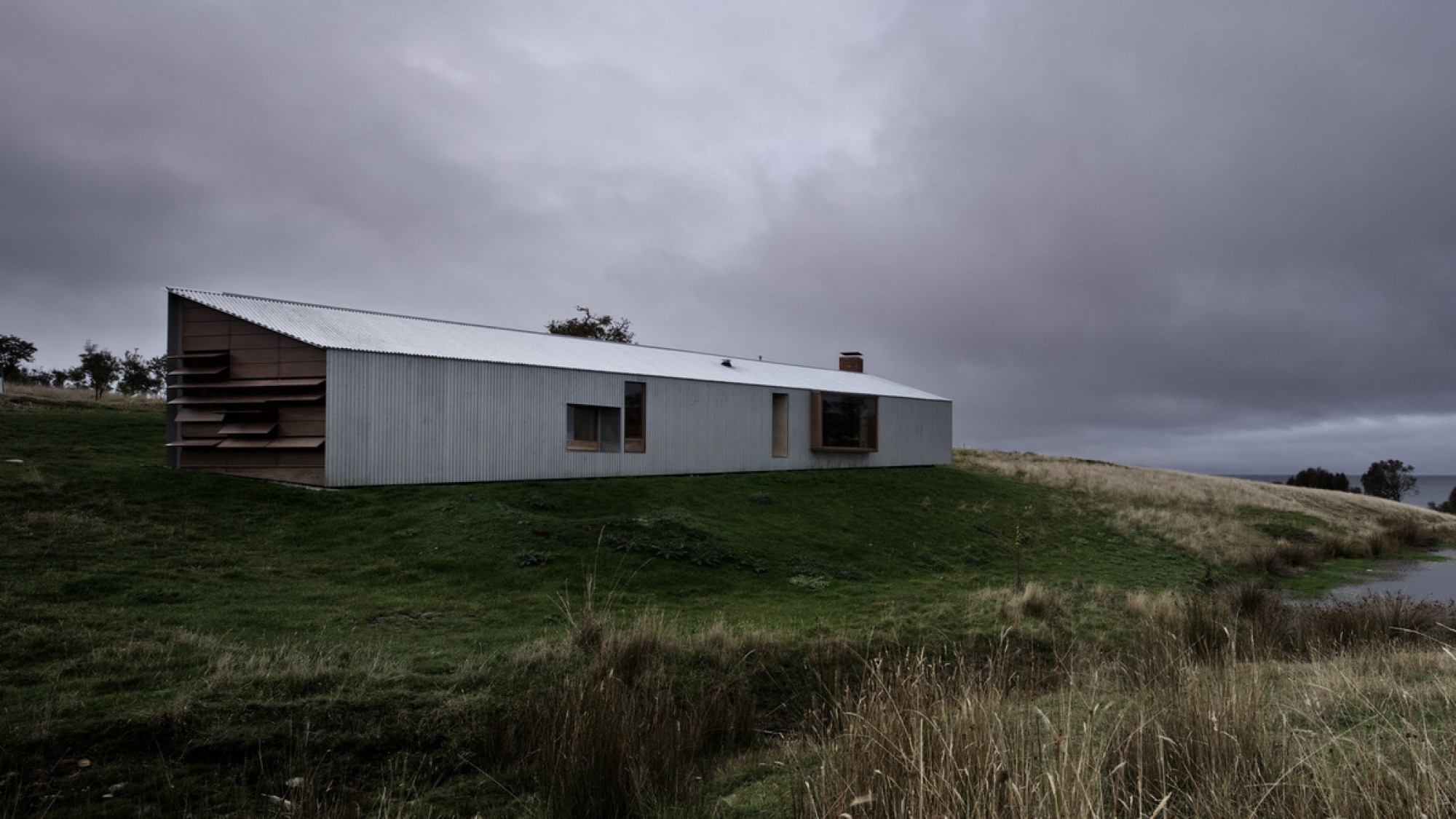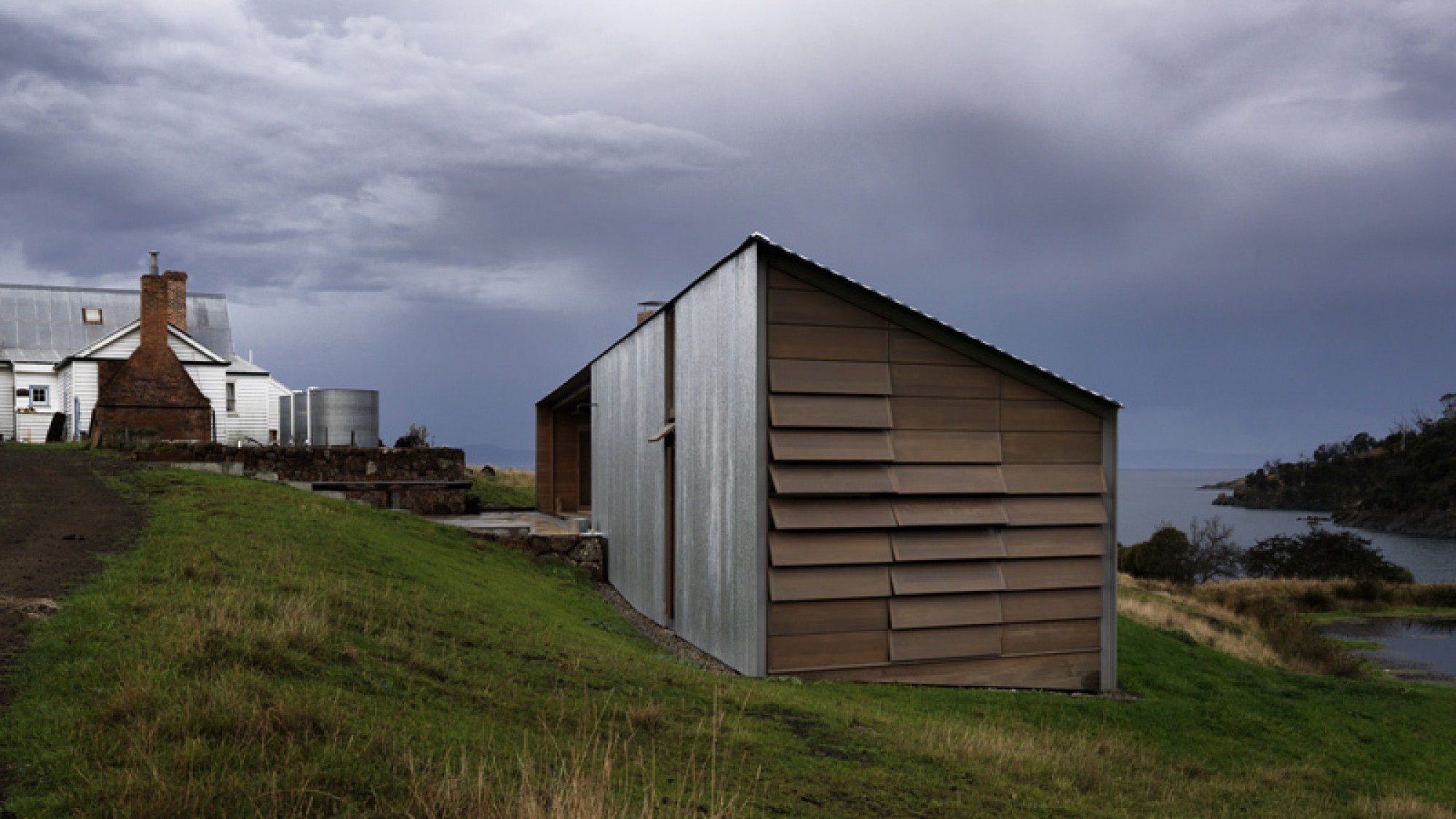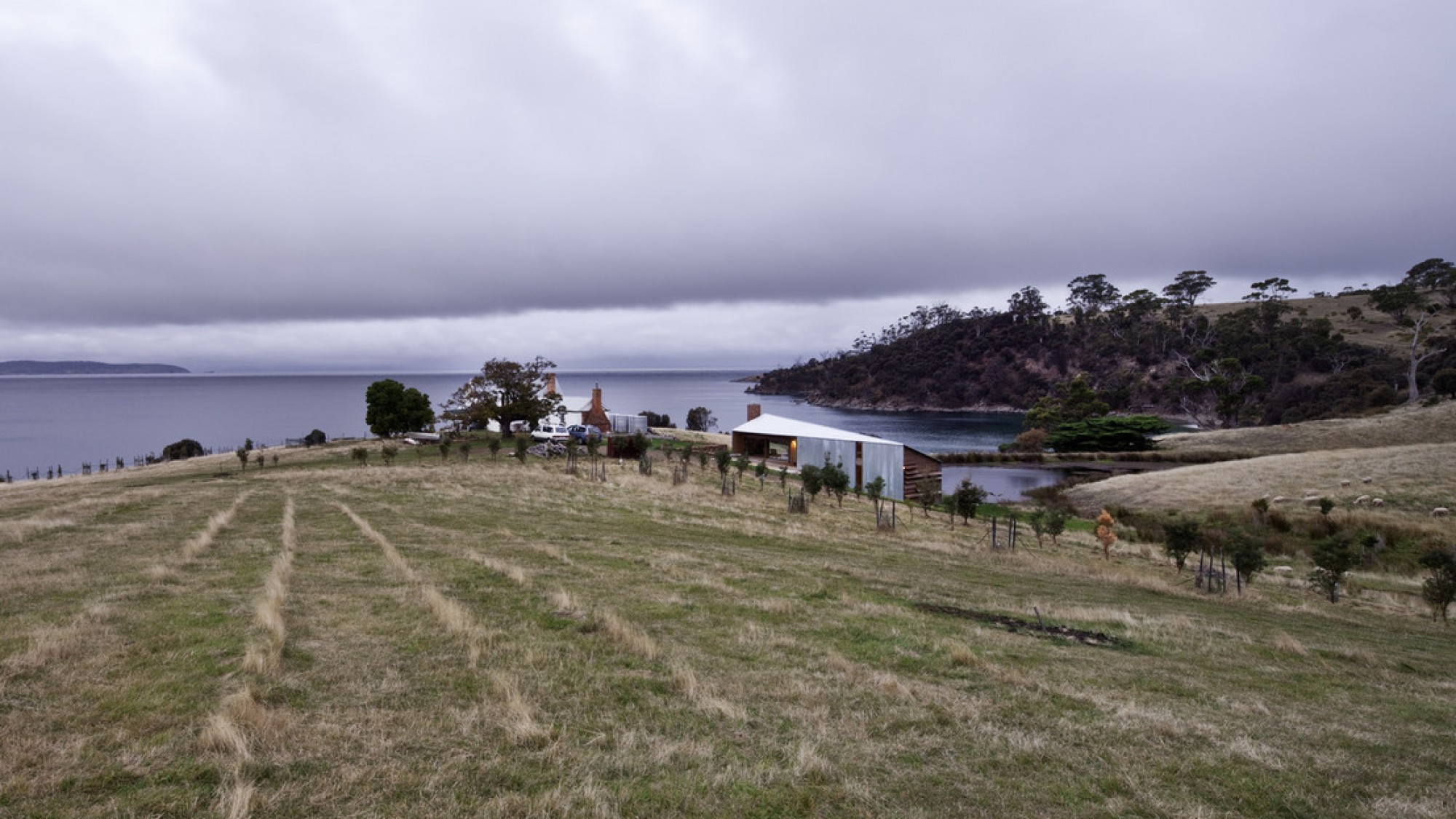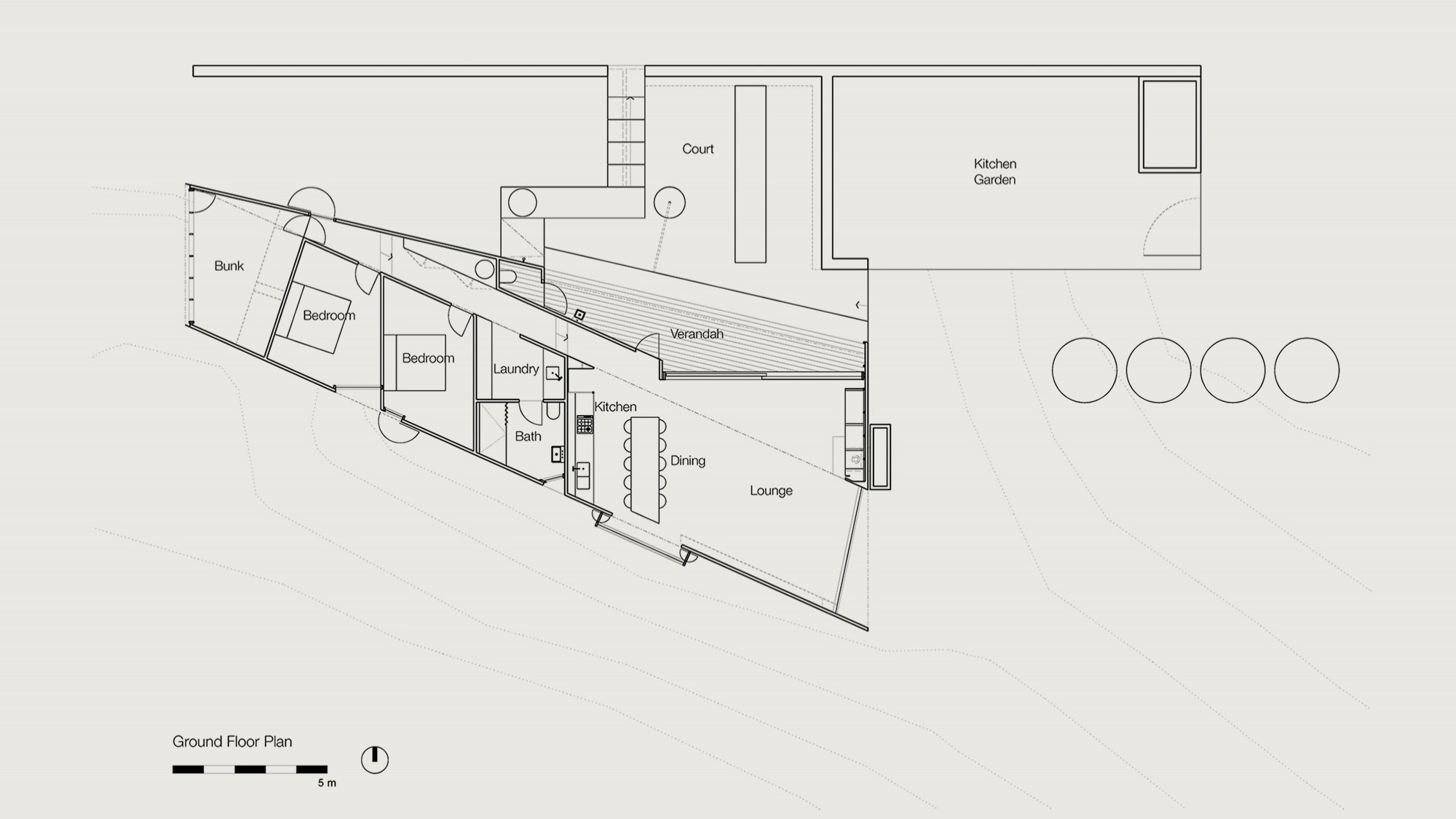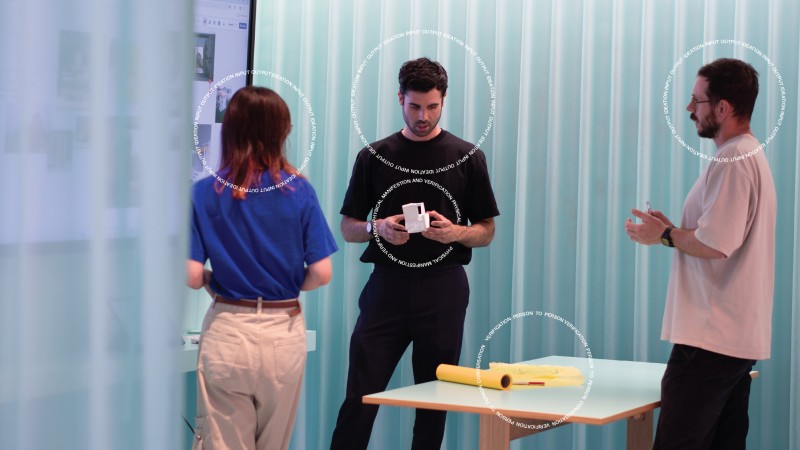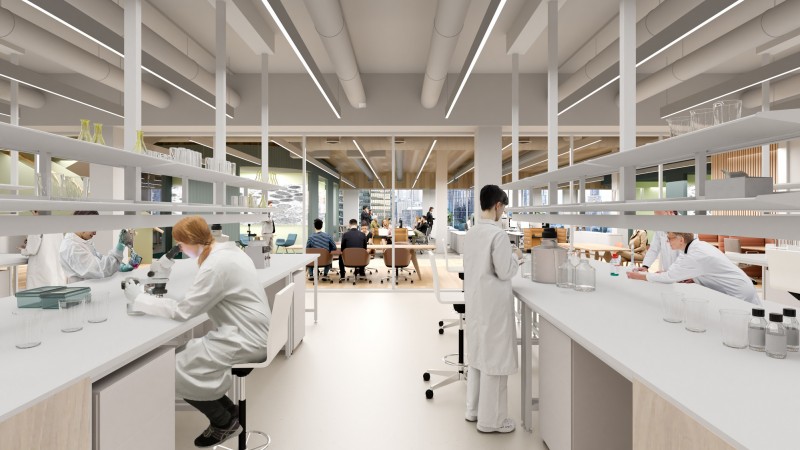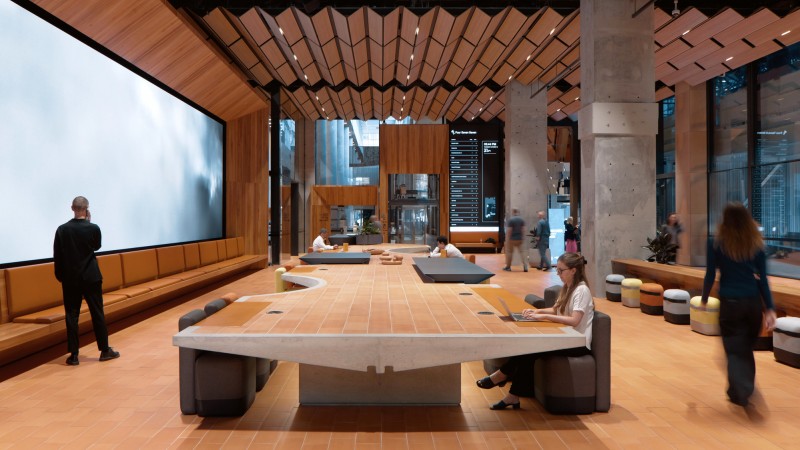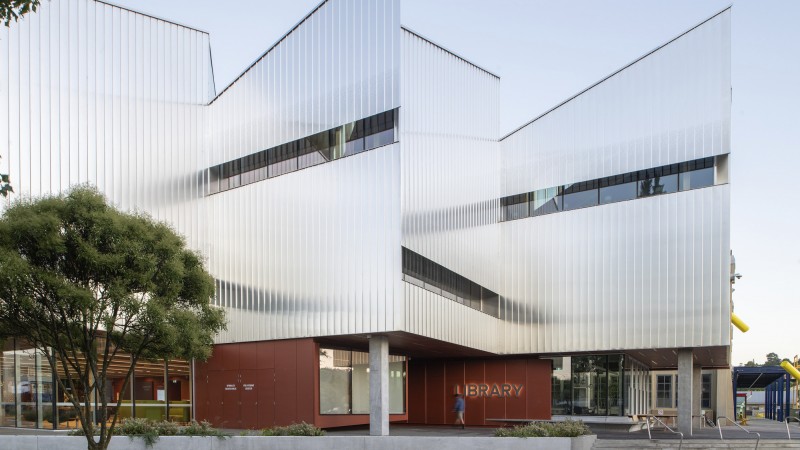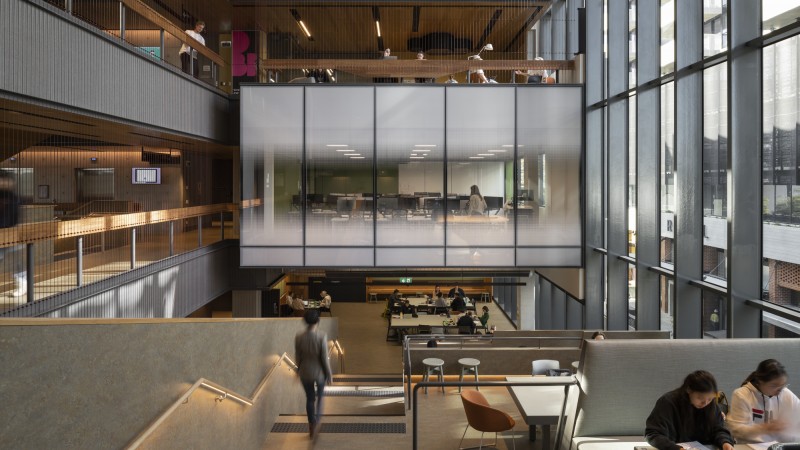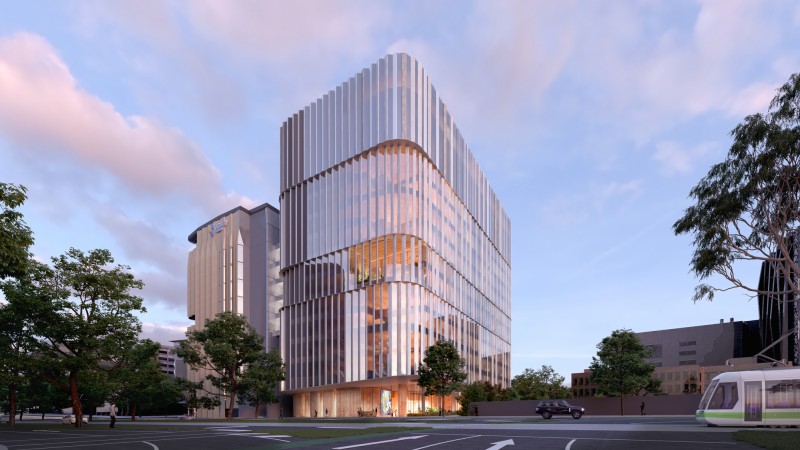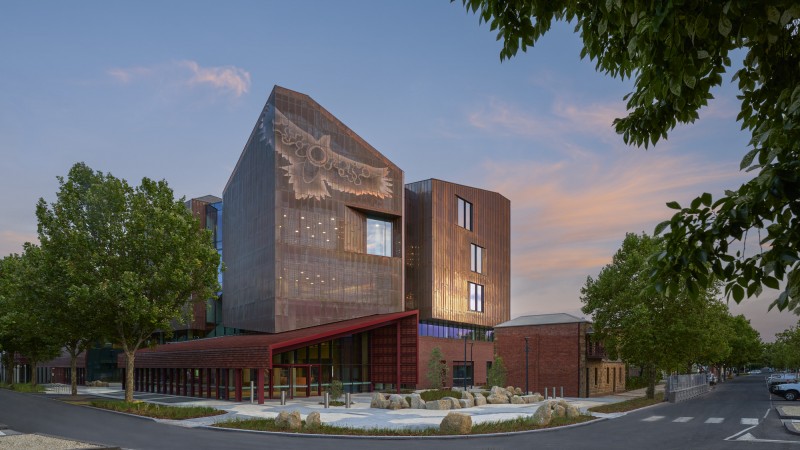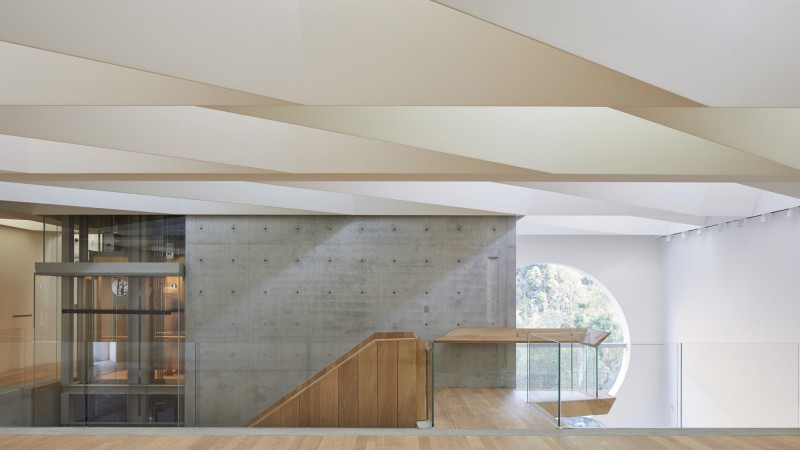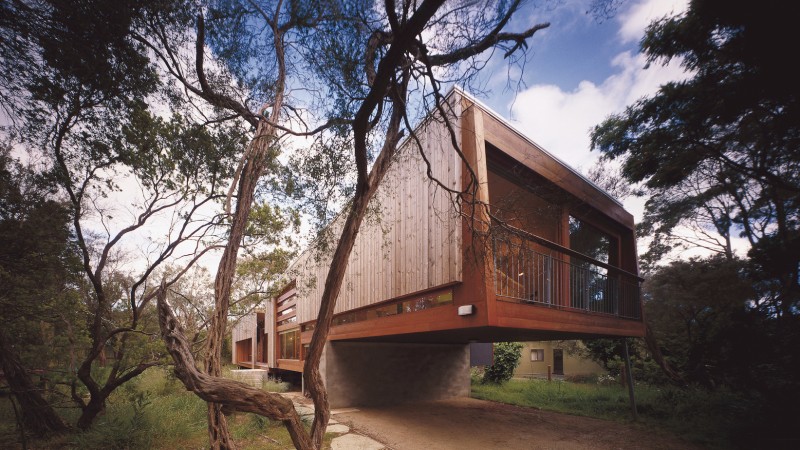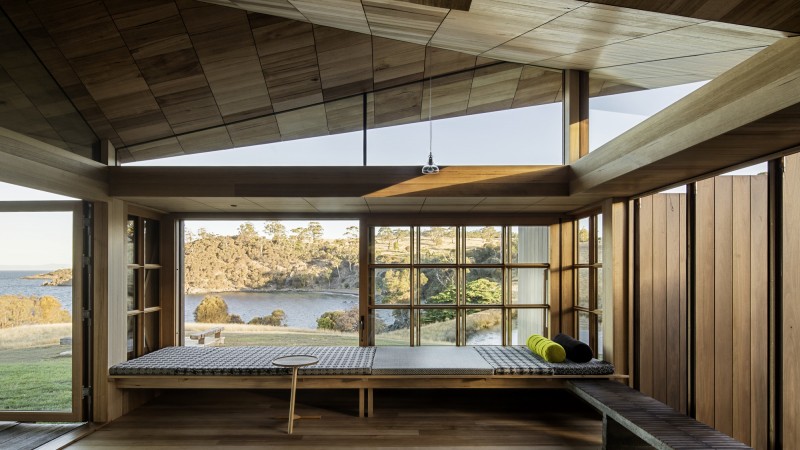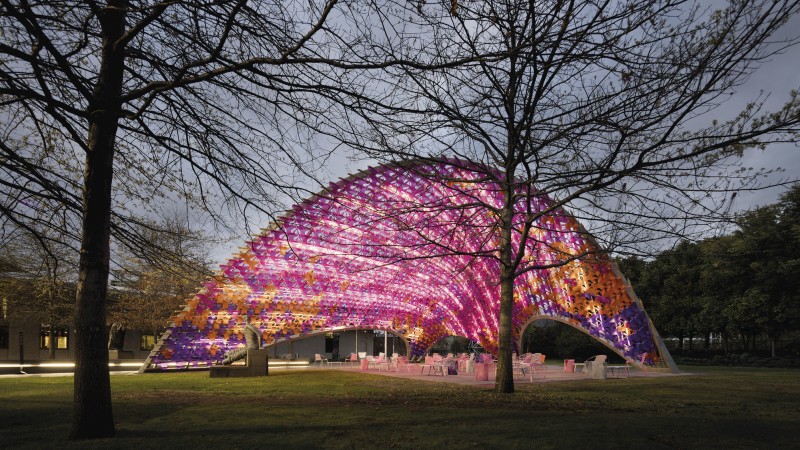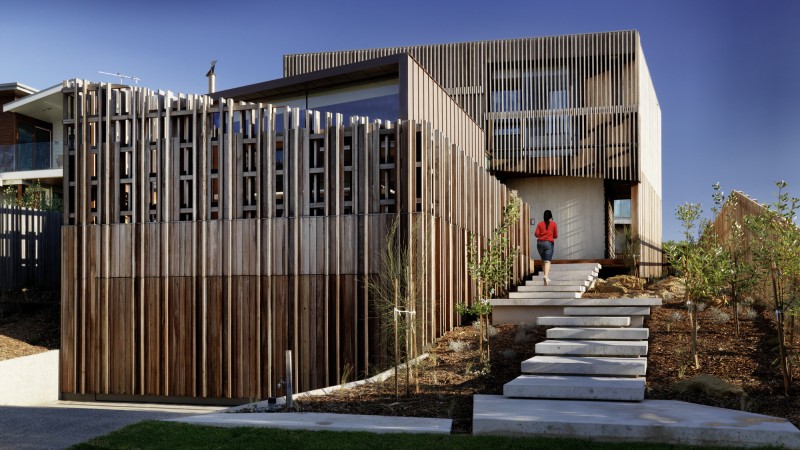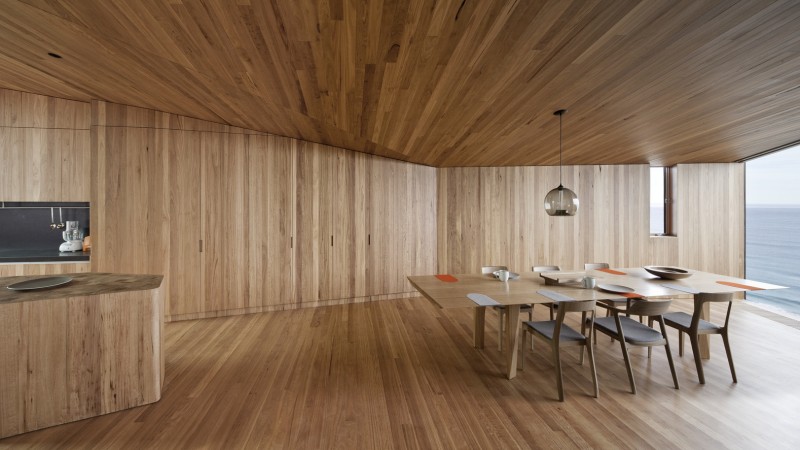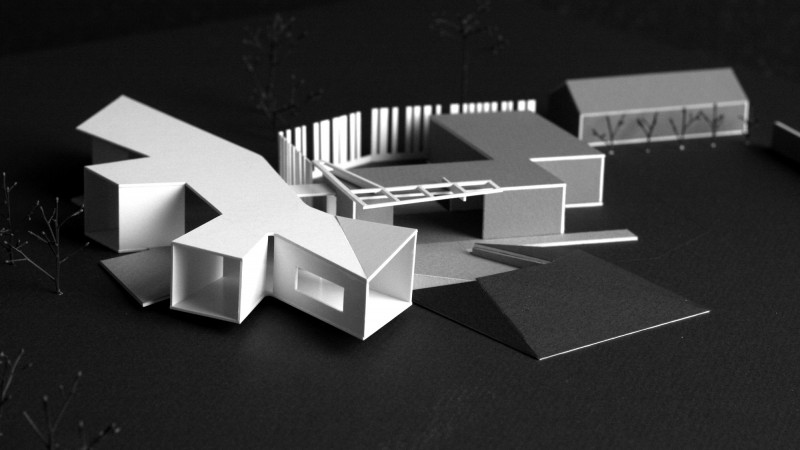In many ways this project represents a return to the Australian vernacular – it is inherently more sustainable than many contemporary forms of construction. Nestled low along a gulley where it is sheltered from prevailing winds, the building is constructed primarily from timber. The energy embodied in the fabric of the building is minimised. Heated by a wood fire and naturally ventilated by openable vents and louvers allow for controlled cross ventilation during summer. Double glazing and high performing insulation to floors, walls and ceiling, reduce heat loss during the winter months. All rainwater is collected and used for drinking, toilets and showers. All waste water is treated on-site and used to irrigate a small native plantation. Water is solar heated, and there is a wood heater to respond to year round occupation.
Shearers Quarters
This beguiling shearers quarters sits as a companion building to an existing historic cottage on a working sheep farm.
Located on the site of the old shearing shed that was destroyed by fire. The residence houses shearers, and family and friends on annual tree planting weekends and retreats.
The plan form transforms along its length to shift the profile of a slender skillion at the western end to a broad gable at the east. The geometry of this shift is carried through to the layout of internal walls, lining boards and window frames.
A singular palette of materials is used with corrugated galvanised iron to the exterior, and timber internally. Inside is a large open living/dining/kitchen area, bathroom and laundry, two bedrooms and a bunkroom.
The primary internal lining is Pinus Macrocarpa sourced from many different suppliers principally as individual trees from old rural windbreaks.
The bedrooms are lined in recycled apple box crates, sourced from the many old orchards of the Huon Valley where the timber remained stacked but unused since the late 1960s.
- Traditional Custodians The Nuenonne people
- Location Bruny Island, Tasmania
- Procurement Private Commission
- Project Duration 2008 – 2011
- Floor Area 136 sqm
- Site Area 440 ha
- Selected Awards
- The Robin Boyd Award for Residential Architecture, AIA National Architecture Awards 2012
- James Blackburn Triennial Prize for Residential Architecture, AIA Tasmania 2015
- Esmond Dorney Award for Residential Architecture, AIA Tasmania 2012
- Colorbond® Award for Steel Architecture, AIA Tasmania 2012
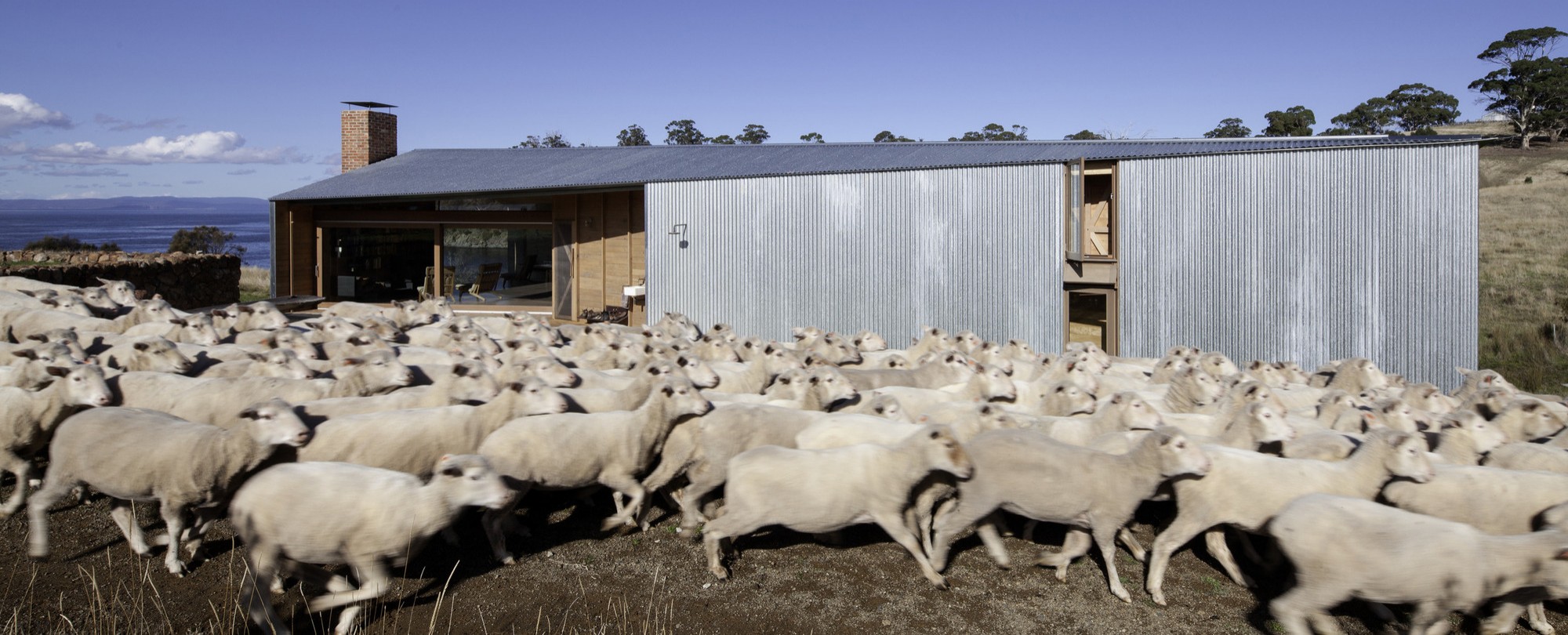
The Shearers Quarters is located on ‘Waterview’, a historic farming property on North Bruny Island, land first granted to Captain James Kelly in 1820.
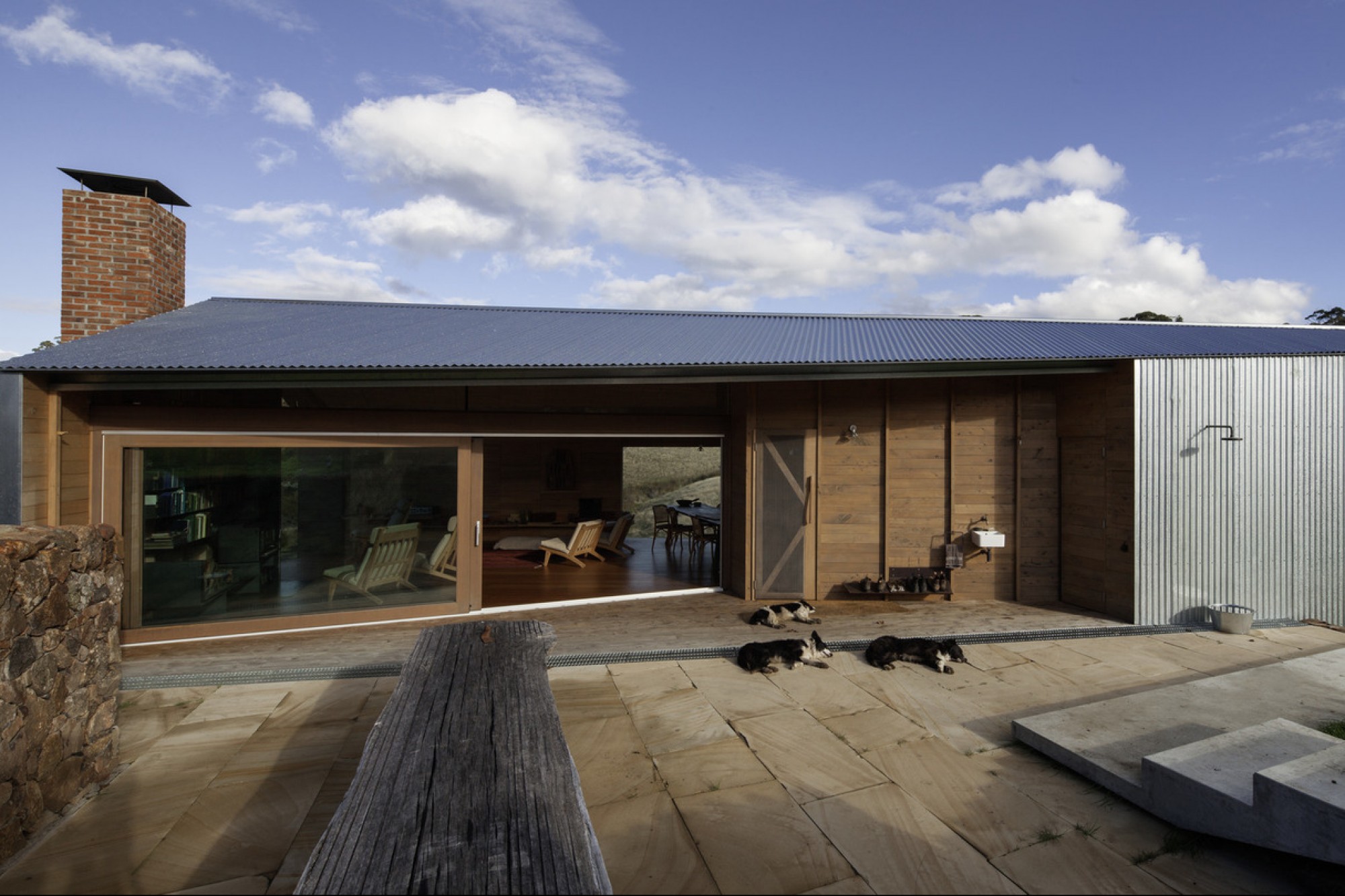
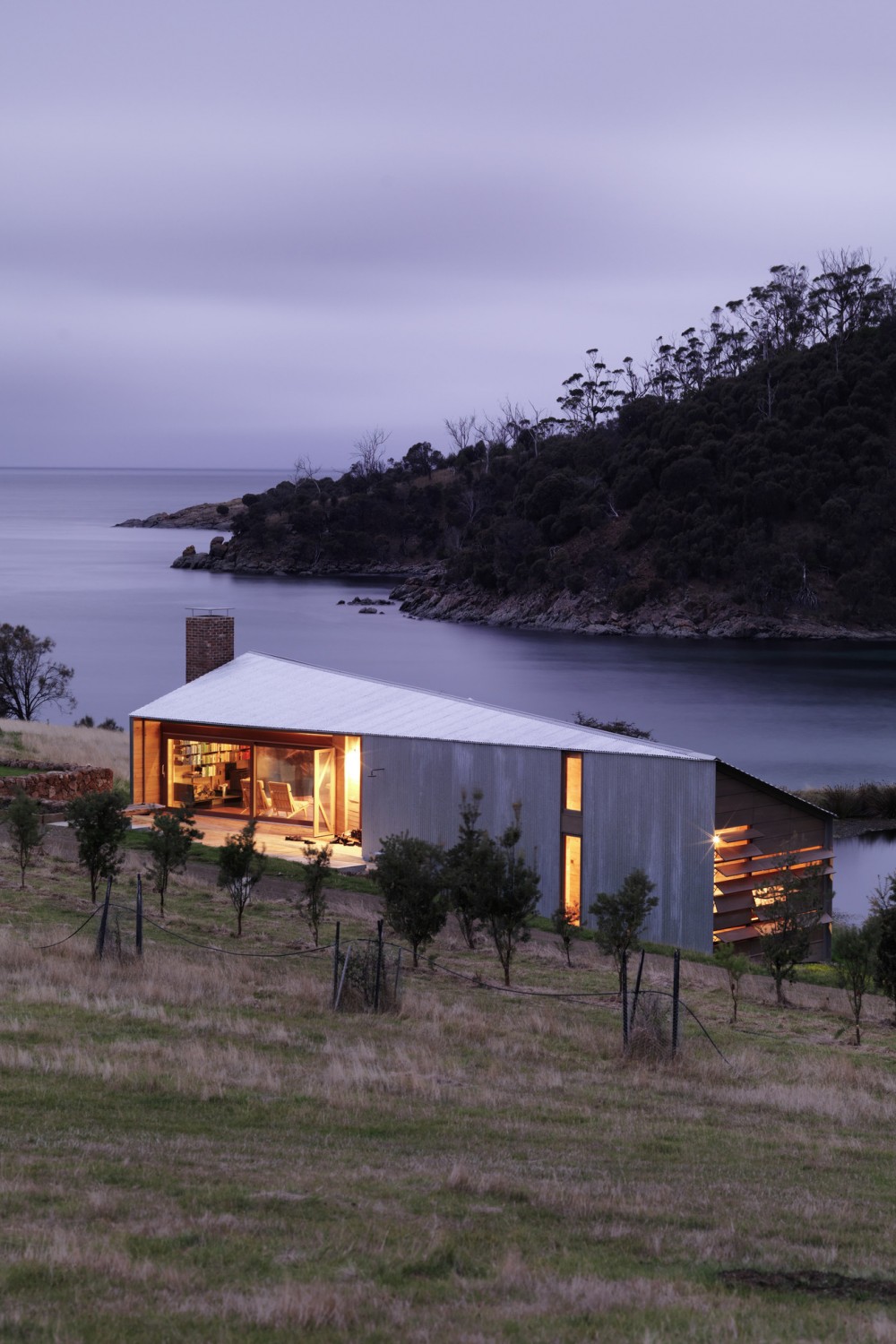
There have been extensive environmental initiatives undertaken on the property, including significant indigenous tree planting.
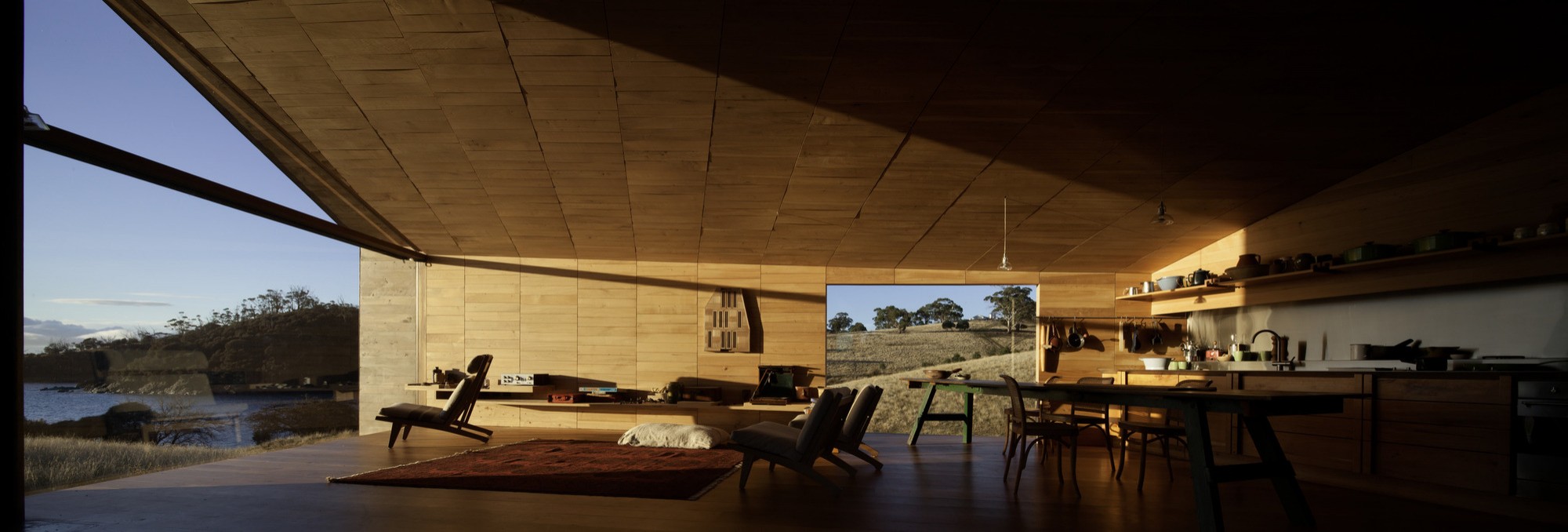
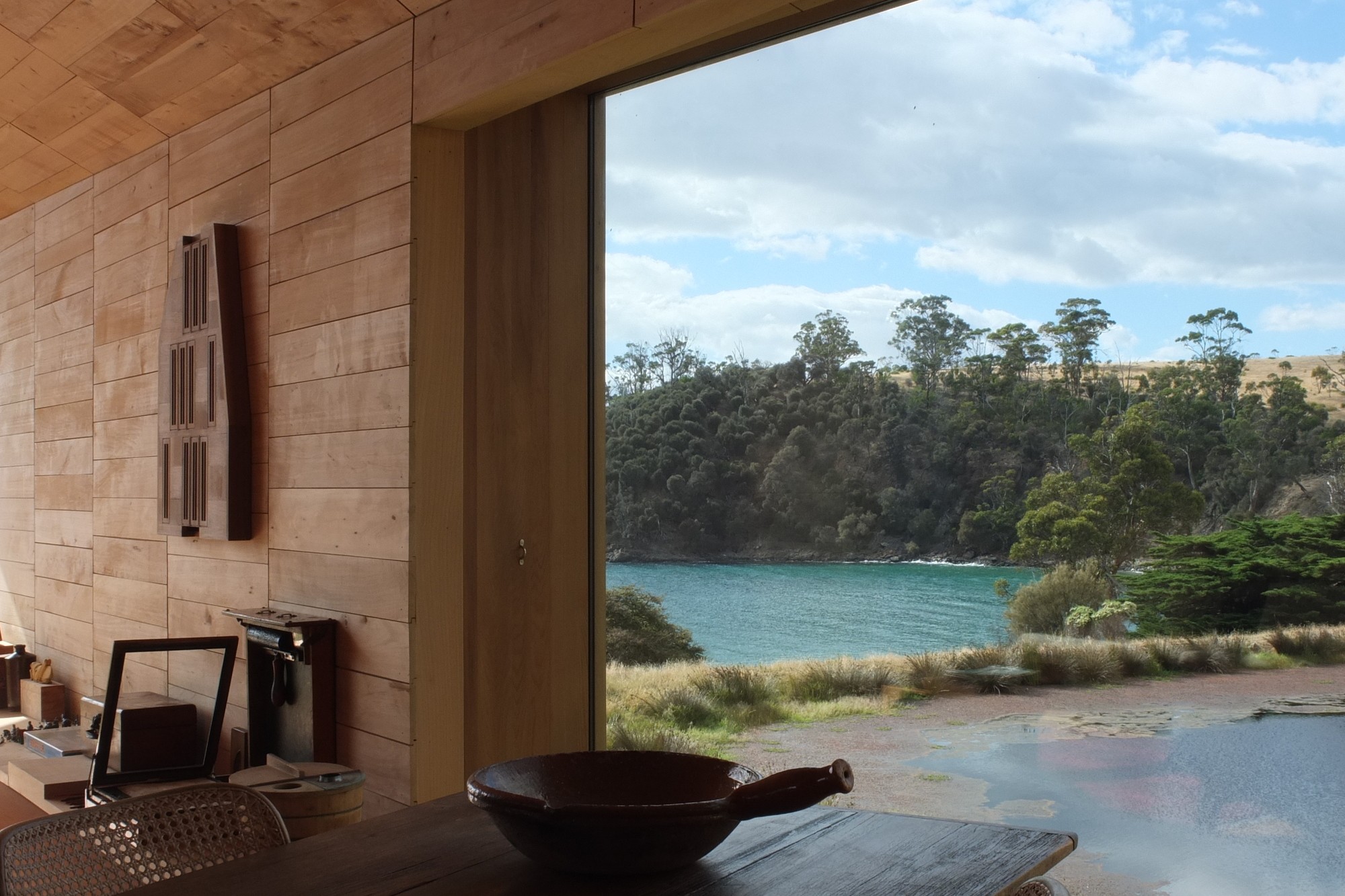
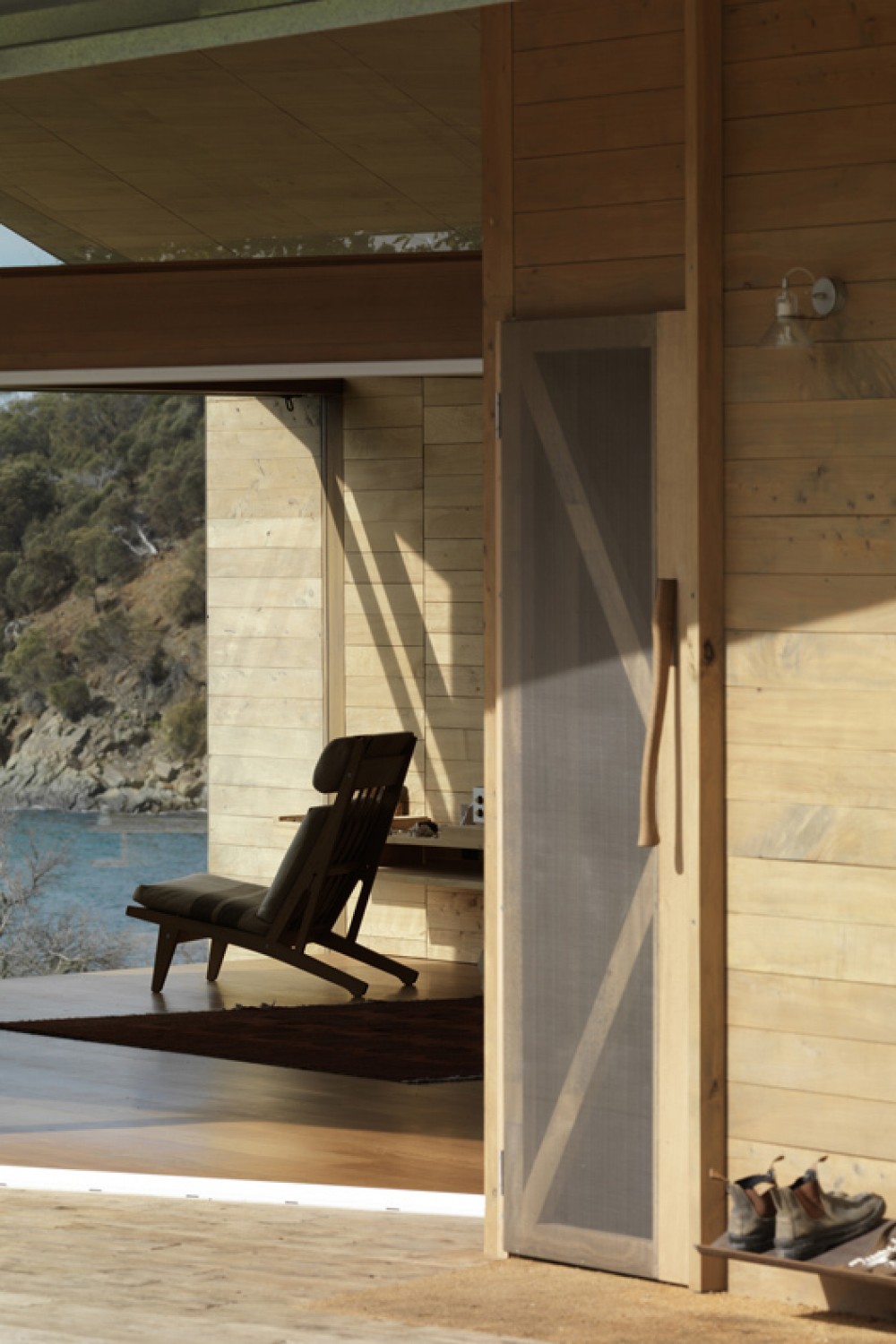
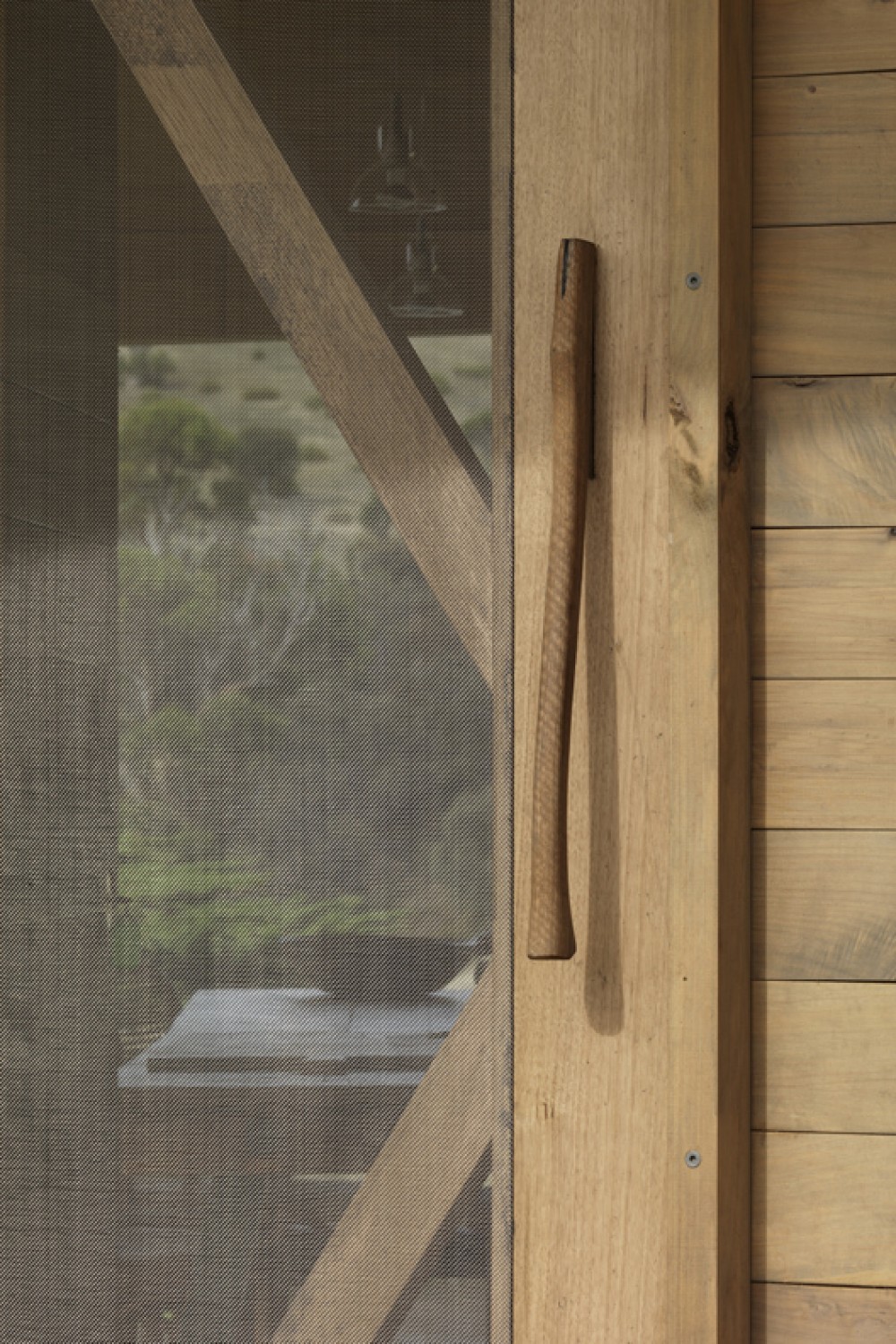
The lodgings have a wonderful sense of spirit, tactility and purpose; the use of applewood cladding throughout the interior gives a rare sense of warmth, simplicity and humility to the internal spaces.
Jury Citation – Robin Boyd Award for Residential Architecture (Houses)
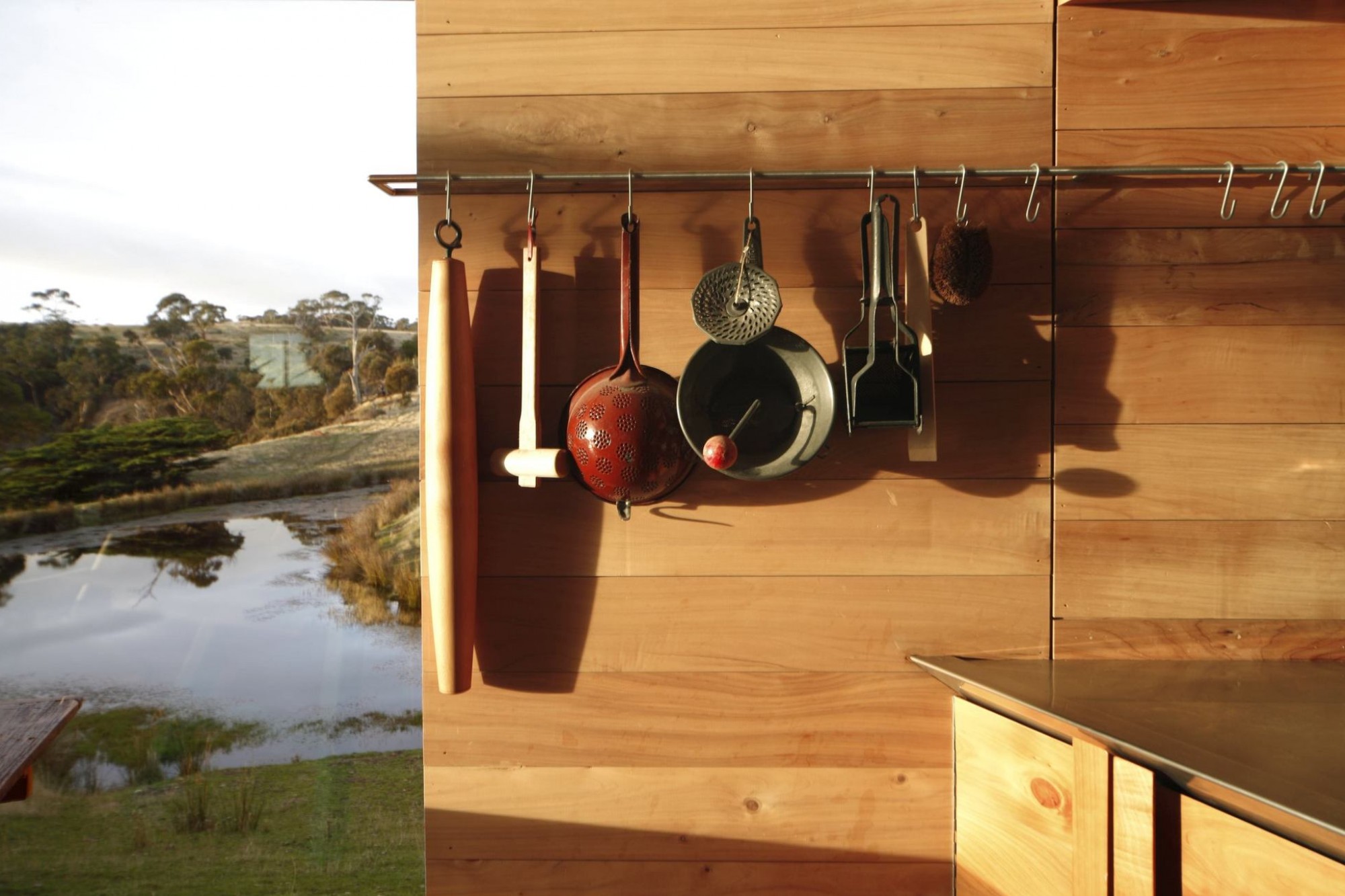
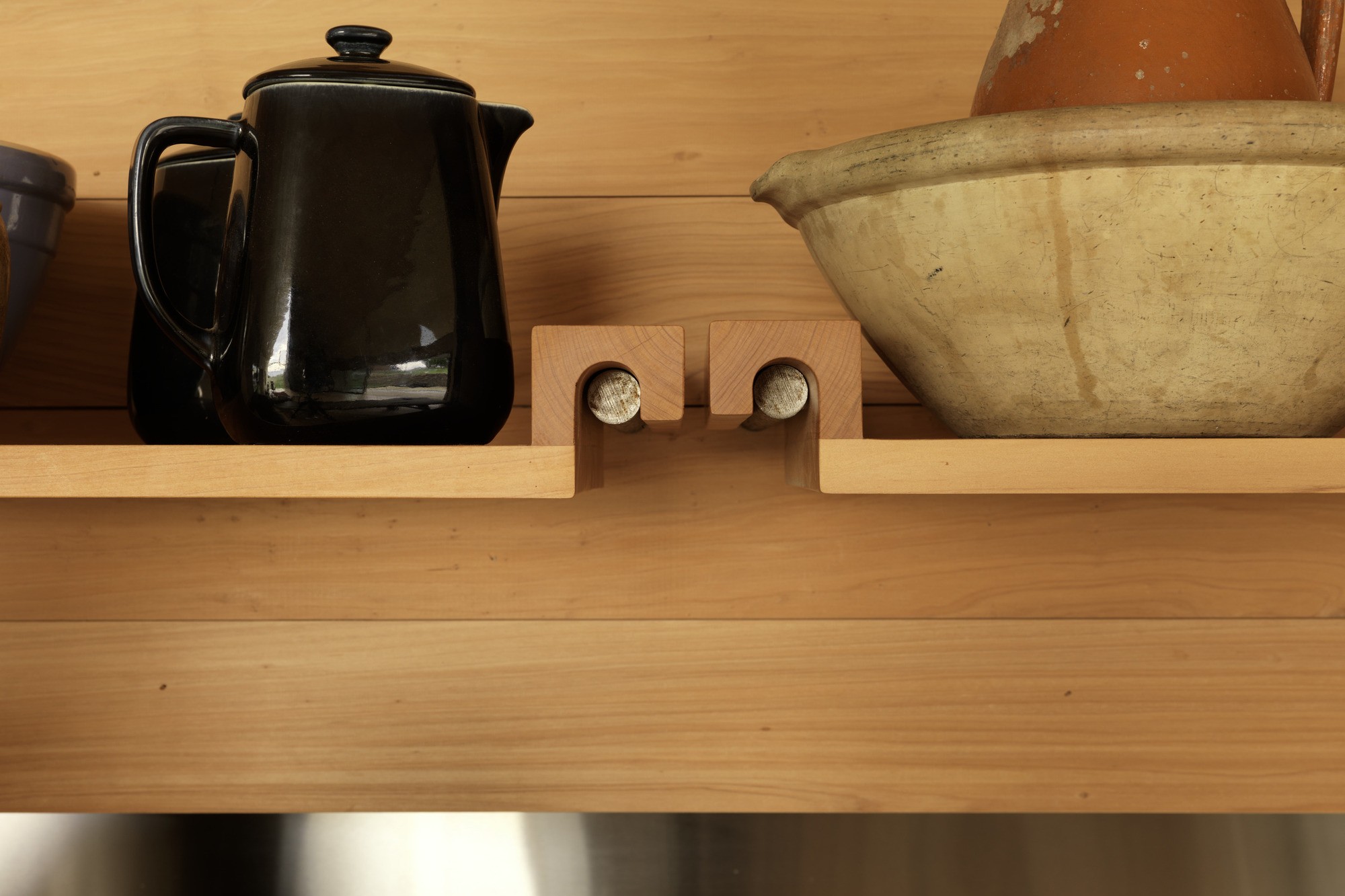
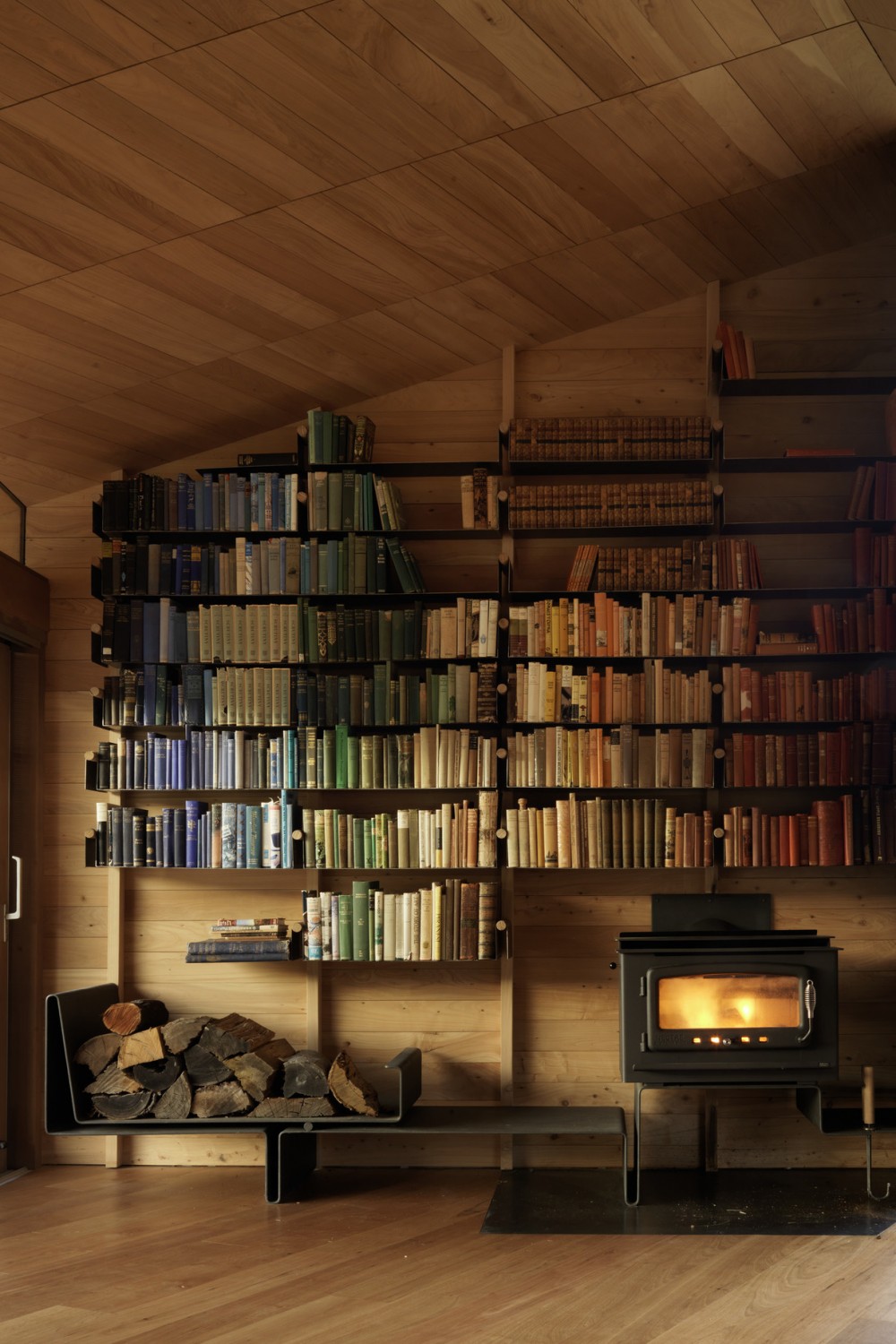
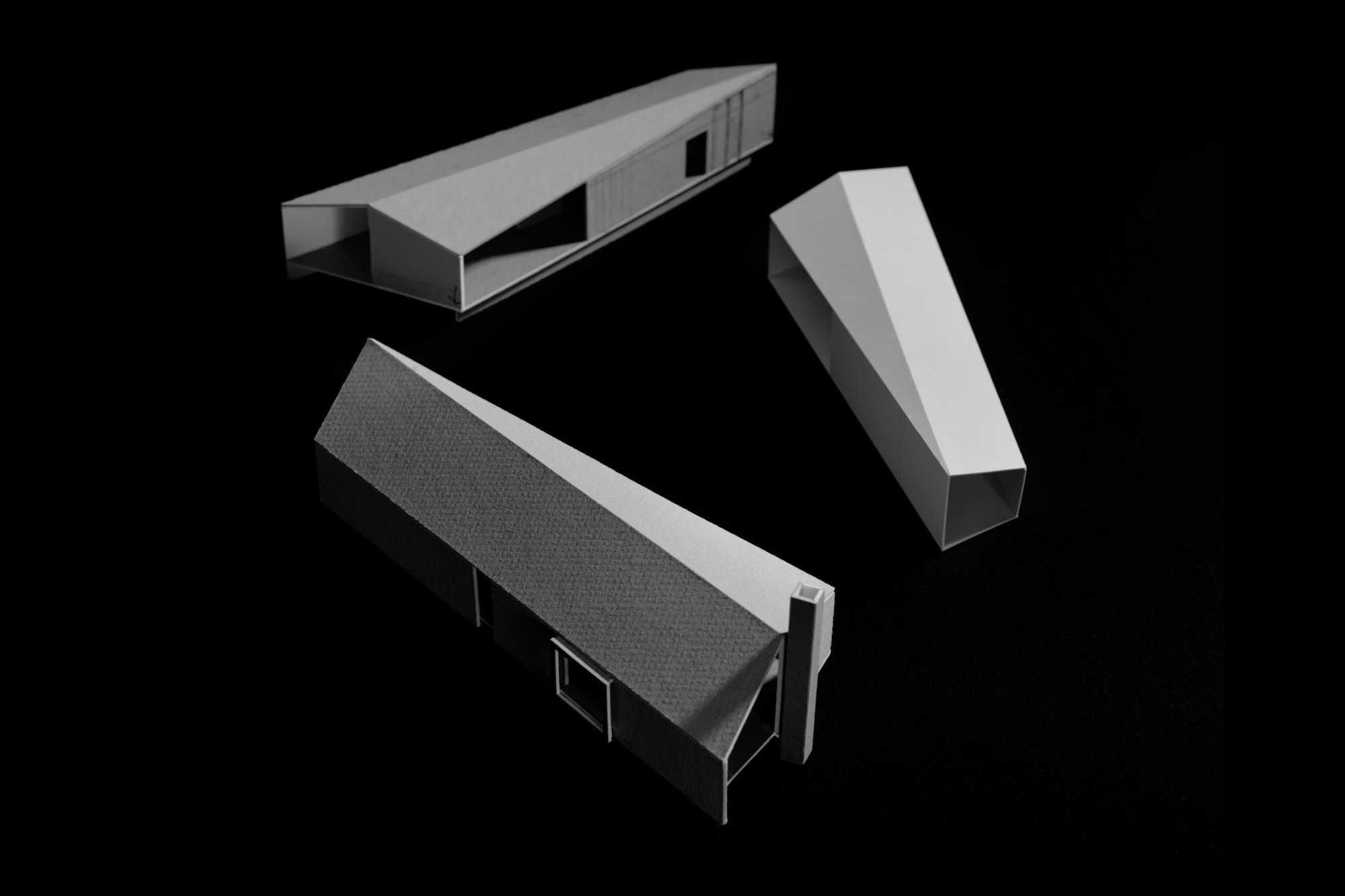
The plan transforms along its length to shift its profile from a slender skillion roof at the west to a broad gable at the east.
It is clad externally in galvanized iron and internally lined entirely with timber. A detached brick chimney forms a dialogue with those of the adjoining 1830’s dwelling.
